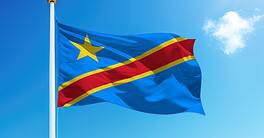Our 25th annual report grading the world’s central bankers finds the vast majority loosening monetary policy to boost growth.
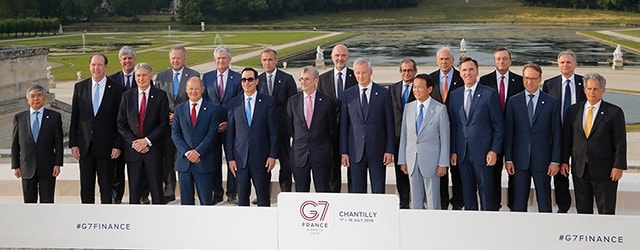 Central bankers, finance ministers, and economic policy officials pose for a group photo at the G7 finance ministers summit in Chantilly, France in July. |
A year ago, central bankers around the world were beginning to raise interest rates to more-normal levels after flooding the markets with liquidity in the wake of the 2008 financial crisis. Today, most are reversing course: once again lowering rates to support their economies in an environment of rising protectionism, slowing global growth and weak inflation.
Fitch Ratings recently created a new dispersion index that gives a bird’s eye view of the direction of global monetary policies, because “the extent to which changes in the direction of monetary policy are synchronized across countries can have important impact,” the company noted in August. The index shows a dramatic turnabout in every corner of the Earth in the last year. In December, a majority were tightening and just 3% were easing monetary policy. By midsummer, most were easing or holding steady. “The shift in the direction of global monetary policy in the last six months has been more broad-based across geographies than in any period since 2009,” Fitch commented.
Even so. US President Donald Trump has repeatedly criticized Federal Reserve Chair Jerome Powell for not cutting interest rates quickly enough. “If we had a Fed that would lower interest rates, we would be like a rocket ship,” he said in July. When the Fed lowered rates by a quarter point at the end of the month, Trump said, “Powell let us down.” Powell insisted that the cut was not due to political pressure. “We never take into account political considerations,” he said. “We also don’t conduct monetary policy in order to prove our independence.” Trump had previously attacked the European Central Bank and the People’s Bank of China (PBoC) for making the opposite move.
In August, the US Treasury took the unusual step of formally declaring China a “currency manipulator,” something it had not done since 1994. The move came hours after Trump criticized Beijing for allowing the renminbi to depreciate to more than 7 RMB to the dollar for the first time in 11 years. The PBoC contended that the depreciation was mainly a result of the trade war between the two countries. The fall in the renminbi came after Trump vowed to impose 10% tariffs on the remaining $300 billion of Chinese imports beginning on September 1. China’s central bank, for its part, accused the US of “wayward unilateralism and protectionist behavior that … will have a major impact on global economic finance.” Draghi similarly said trade disputes were making further stimulus necessary.
Global Finance has been grading central bankers for 25 years, based on inflation control, economic growth, currency stability and interest-rate management, among other criteria. Each central banker’s ability to protect independence in the face of political pressure, as well as skills and diligence in supervising financial institutions, are also taken into account. This year we rate 100 central bank governors with grades ranging from A for honors to F for failure. For the first time, we grade the governors of Cambodia, Gambia, Kyrgyzstan, Laos, Madagascar, Mauritania, Mauritius, Mongolia, Mozambique, Rwanda and Zimbabwe.
PROFILES BY REGION
North America | Latin America | Europe | Asia-Pacific | Middle East & Africa
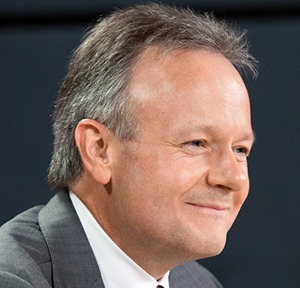 |
NORTH AMERICA
CANADA
Stephen Poloz | GRADE: B—
The Bank of Canada held its key policy rate at 1.75%—the highest level since 2008—in the first nine months of this year, despite growing concerns about global trade tensions and uncertainty over trade relations with the US. Meanwhile, the Canadian dollar fell to 75 US cents amid worries that the country’s commodity exports, including oil, could be harmed by a global slowdown.
The central bank said, following its July meeting, that it would continue to “pay particular attention to developments in the energy sector and the impact of trade conflicts” on Canada’s growth and inflation outlook. GDP growth is returning to potential after stalling late last year, while inflation remains near its 2% target. “However, the outlook is clouded by persistent trade tensions,” the central bank said in its July 10 statement.
UNITED STATES
Jerome Powell | GRADE: A—
Despite unrelenting criticism from the president, Powell has done a creditable job in his second year as Federal Reserve chair. While it is not unusual for presidents to favor looser monetary policy, the attacks on Powell have been particularly vitriolic. To his credit, the Fed chief has managed to maintain the Fed’s independent tone amid the fusillade.
The US economy has performed well on Powell’s watch: so well that some have questioned the need for lower interest rates. Unlike most previous Fed chairs, Powell is paying great attention to global developments. On July 31, the Fed lowered its overnight lending rate by a quarter point to a target range of 2% to 2.25%, marking its first cut in more than 10 years. Powell said the adjustment was an insurance policy to keep the long-running US expansion on track in the face of a slowing global economy.
“The global nature of the financial crisis and the channels through which it spread sharply highlight the interconnectedness of our economic, financial and policy environments,” Powell said at a central bankers’ conference in Paris in mid-July. “US economic developments affect the rest of the world, and the reverse is also true.”
LATIN AMERICA
ARGENTINA
Guido Sandleris | GRADE: C
Sandleris, who replaced Luis Caputo in September 2018 as governor of the Banco Central de La Republica Argentina, is waging a long-running war against hyperinflation and a general lack of trust in the independence of the central bank. “The BCRA is in a challenging spot, having had its credibility seriously dented by the perception of political interference in 2017 and its lack of power to control the markets’ significant deterioration of sentiment toward the country,” says Jeffrey Lamoureux, head of Americas country risk at Fitch Solutions.
A 36-month deal between Argentina and the International Monetary Fund approved in June last year introduced a new regime targeting money supply growth, which appears to be stabilizing the peso and bringing down the pace of inflation.
“The central bank is tightening the monetary policy, which is what is needed to bring inflation down, but its choice has more to do with the IMF’s demands than a deep sense of independence or change in approach by the government,” says Edward Glossop, emerging markets economist at Capital Economics, who argues that taming Argentina’s inflation will take years.
A proposed charter to make the central bank more independent, which was part of the deal with the IMF, has little hope of winning approval from the current Congress.
BAHAMAS
John Rolle | GRADE: B
Rolle has been leading the Central Bank of the Bahamas since January 2016. With the Bahamian dollar pegged at par with the US dollar, there is little room for maneuvering. The financial system is sound, although a recent IMF report has raised doubts as to the independence of the central bank in relation to state-owned banks. After years of stagnation, growth recently returned in the country thanks to a series of economic reforms by the current government. However, both the government and the central bank face a new test responding to last month’s catastrophic hurricane.
BOLIVIA
Pablo Ramos Sánchez | GRADE: C
Sánchez was appointed in January 2017 by President Evo Morales as president of the Central Bank of Bolivia. The 82-year-old has done a good job maintaining a tight link between the bolíviano and the US dollar. “Inflation remains low and stable and the central bank maintains a pretty rigid peg of BOB 6.91/USD,” says Lee Sutton, country risk analyst at Fitch Solutions. “Higher energy prices have helped it maintain that peg, but we otherwise don’t have a strong view of its effectiveness.”
BRAZIL
Roberto Campos Neto | GRADE: Too Early To Say
Campos Neto, appointed in February to replace Ilan Goldfajn as president of the Central Bank of Brazil, appears to be following the policies of his predecessor. “Although inflation has been well within its 2.75-5.75% target band and markets now expect rate cuts, the bank has remained neutral, highlighting its focus on fiscal reforms to ensure that long-run drivers of inflation are addressed before it commits to pushing interest rates lower,” says Fitch Solutions’s Lamoureux.
Campos Neto is building on a cushion of credibility that is unusual for Brazil. “There has been a big shift,” says Glossop at Capital Economics. “Previously, with Alexandre Tombini (2011-2016), there was frequent political pressure on the central bank to cut interest rates and this is not the case anymore. Neto is showing continuity over Goldfajn and in fact the inflation is very low in comparison to Brazilian’s standards” The bank is not totally independent from the government; legislation to address this issue has been presented but not yet approved.
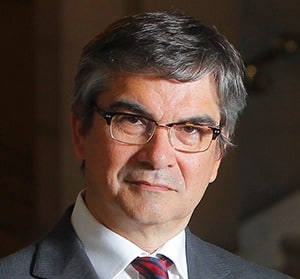 |
CHILE
Mario Marcel Cullell | GRADE: A—
Chile’s central bank is rated strongest and most credible in South and Central America when it comes to monetary policy. Marcel, appointed governor in 2016, is seen as a safe pair of hands. “The Central Bank of Chile is one of the most stable in the region,” says Andrew Trahan, country risk analyst at Fitch Solutions. “It has responded proactively to inflation … and has a strong track record of both effective inflation management and transparency.”
A decision in June to cut interest rates by 50 basis points took the financial markets by surprise. “[Chile’s] recent move to cut rates, while surprising to the markets and to us, has been explained carefully and is justified by the underlying macro conditions,” Trahan says.
COLOMBIA
Juan José Echavarría | GRADE: B+
Echavarría has been the head of the Bank of the Republic (Colombia) since January 2017. He is more vocal than his predecessors and has been publicly criticized by the government for his bold positions. Monetary analysts give him, and the central bank, mixed reviews.
“BanRep has managed to curb inflation, bringing price growth well within its 2-4% target range in the last 12 months, while maintaining an accommodative monetary policy stance,” notes Sutton at Fitch Solutions. “It has held its policy interest rate at 4.25%, a multi-year low, since Q2 ’18 in an effort to stimulate growth. Separately, the central bank implemented a dollar-buying program from September 2018 to May 2019 that boosted its foreign currency reserves by approximately US$1.9 billion, but suspended the program in Q2 ’19 to reevaluate its depreciatory impact on the foreign exchange market.” Some analysts would like Echavarría to be a bit more hawkish, however.
COSTA RICA
Olivier Castro Pérez | GRADE: C+
Cubero has been president of the Central Bank of Costa Rica since August of last year, when he left the IMF to replace Olivier Castro Pérez. His tenure has coincided with a period of relatively stable growth, although the country recently reduced its GDP growth expectation for 2020. The Central Bank “has recently shifted to a rate-cutting cycle in recent months to bolster economic activity,” says Sutton at Fitch Solutions. “In 2018, the BCCR largely surprised markets by enacting two 25 basis-point rate hikes in an effort to support the currency amid selling pressures related to the country’s fiscal trajectory. Despite FX swings, inflation has remained low and stable, averaging 1.9% year-on-year in the year to date and 2.2% in 2018.”
DOMINICAN REPUBLIC
Héctor Valdez Albizu | GRADE: B+
Valdez has been governor of the Central Bank of the Dominican Republic since 2004, making him one of the longest serving governors in the region. He started at the central bank as an economist in the Research Department and was previously governor from 1994 to 2000. His long tenure bolsters confidence among analysts.
“Even as the Dominican Republic has experienced robust economic growth, the BCRD has managed to keep inflation contained,” says Sutton at Fitch Solutions. “In the last three quarters, inflation has averaged 1.7% year-on-year, lower than the 4% average in Q1-Q3 ’18. In addition, the BCRD actively manages the peso, ensuring a steady depreciation in order to maintain export competitiveness and support foreign reserve holdings.”
EASTERN CARRIBEAN CENTRAL BANK
Timothy Antoine | GRADE: B
Antoine has been governor of the Eastern Caribbean Central Bank since 2016, but it’s a fairly simple job, as the EC dollar has been pegged to the US dollar since July 1976. Established in 1983 as the monetary authority for eight island economies – Anguilla, Antigua and Barbuda, Dominica, Grenada, Montserrat, St Kitts and Nevis, Saint Lucia and St Vincent and the Grenadines – the bank maintains the stability of the Eastern Caribbean dollar and the solidity of the banking system.
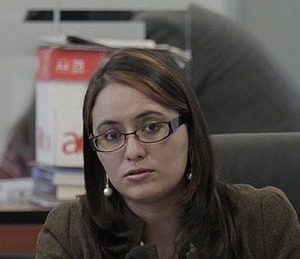 |
ECUADOR
Verónica Artola Jarrín | GRADE: B+
Artola is the only woman governor in the region and among the youngest. The Central Bank of Ecuador has no room for maneuvering given the dollarization of the economy. Early this year, Artola downgraded expected economic growth from 1.4% to 0.2% following the adoption of a restrictive fiscal policy by the current administration. However, she dismisses worries that austerity aimed at cutting the public deficit will bring the country into recession.
“We don’t have a strong opinion about the [central bank],” says Lamoureux at Fitch Solutions. “Given that the economy is dollarized, it does not have an independent monetary policy. Inflation is extremely low thanks to the strong dollar, and we view the major issue with the domestic financial system to be the government’s wide deficits.”
EL SALVADOR
Oscar Cabrera Melgar | GRADE: B—
Cabrera has been the president of the Central Reserve Bank of El Salvador since 2014. Since the economy is dollarized, the reserve bank does not set monetary policy, a policy that has secured currency stability. “Inflation has not averaged above 2% in any year since 2012 and so far in 2019, inflation has averaged 0.6% year-on-year,” says Peter Giblin, country risk analyst at Fitch Solutions.
GUATEMALA
Sergio Recinos Rivera | GRADE: C
Recinos, who was named governor of the Bank of Guatemala in 2017, brings 30 years of experience at the institution. Some analysts, however, question his independence. The central bank, which has had an inflation target of 3-5% since October 2013, “has tolerated breaches of that band four times since January 2017: two above and two below,” says Giblin at Fitch Solutions. “During that same period, Banguat has cut rates by 25 basis points once, in October 2017, from 3% to 2.75%.”
HONDURAS
Wilfredo Cerrato | GRADE: A
Cerrato has been president of the Central Bank of Honduras since January of last year. The central bank’s lax monetary policy in recent months is seen by economists as a justified to external weak economic conditions and not politically motivated. In fact, inflation that peaked earlier this year fell back below 5% in June. The central bank has maintained a target band of 3-5% since December 2016.
“Inflation breached the upper bound in May, but the BCH did not raise rates at its June meeting,” notes Giblin at Fitch Solutions. “That’s likely for two reasons: one, it raised rates by 25 basis points in January for the first time since May 2014, two, growth underperformed in the first half.”
JAMAICA
Richard Byles | GRADE: Too Early to Say
Byles, a prominent business leader, was selected by the Cabinet to take over as governor of the Bank of Jamaica in June. Jamaica has a small financial market but a reputation for managing its monetary policy well to keep inflation within a relatively thin range.
“We have a constructive view overall of Jamaica’s macroeconomic policies,” says Lamoureux at Fitch Solutions. “Since entering a financing agreement with the IMF in 2013, both the Jamaica Labour Party and the People National Party have demonstrated commitment to pursuing orthodox economic policies, in particular closing the budget deficit. That has in turn helped bring down a structural driver of inflation and supported the BoJ’s more accommodative monetary policy. Additionally, reforms meant to strengthen the BoJ’s independence and establish an explicit inflation target will help anchor inflation expectations.”
MEXICO
Alejandro Díaz de León | GRADE: A
Díaz de León, who took over as governor of the Bank of Mexico in 2017 from the long-serving Augustín Carstens, has maintained a similarly credible profile both before and since the election of the new populist government of Andres Manuel Lopez Obrador (AMLO). “He is as hawkish as Carstens, and the main issue with him is that he has been too hawkish in keeping interest rates so high for so long,” says Glossop at Capital Economics. “That seems to be inconsistent with the fact that the economy is too weak”.
The central bank has responded aggressively to any hint of inflation, hiking the benchmark interest rate to a record 8.25%, indicating its commitment to its price target, according to Fitch Solutions’s Trahan. That said, there is potential for disagreement between the “longer-serving, more hawkish members and AMLO’s appointees [Jonathan Heath and Gerardo Esquivel], who were likely appointed in part for their more dovish views. This risk will grow as economic growth remains weak”.
NICARAGUA
Leonardo Ovidio Reyes Ramírez | GRADE: C
Ovidio Reyes has been president of the Central Bank of Nicaragua since 2012. “The BCN does not use an inflation targeting regime,” says Trahan at Fitch Solutions, “instead relying on a crawling peg to maintain inflation expectations in the economy. The bank has maintained the peg despite rapid capital flight from the country, which has drained its reserves. The BCN’s independence is a concern, given the [ruling] FSLN’s tight control of most other governmental institutions.”
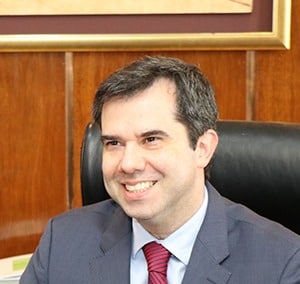 |
PARAGUAY
Carlos Fernández Valdovinos | Jose Cantero Sienra | GRADE: B | Too Early To Say
Fernández, who served from 2013 to August 2019 was only just replaced as head of the country’s central bank by Jose Cantero Sienra, who is therefore too new to grade. Paraguay’s central bank cut its key rates twice this year, to a record low of 4.75%, in an effort to revive economic growth. It is not yet clear if the reputation for great independence won by Valdovino will be extended to his successor. “The Central Bank of Paraguay (BCP) has benefitted from relatively accommodative external conditions and weak domestic demand to modestly lower its inflation target and cut interest rates,” says Jeffrey Jose Lamoureux at Fitch Solutions. “We were surprised by the interest rate cuts, but inflation remains well within target, although its target band is wide at 2%-6%. Lower interest rates are supporting credit growth, although the relatively small size of the domestic financial market suggests that monetary policy transmission is likely slow.”
PERU
Julio Velarde Flores | GRADE: B+
In office as president of the Central Reserve Bank of Peru for 13 years, aconomists consider Velarde a safe pair of hands. “There is not a lot of noise around monetary policy in Peru,” says Capital Economics’s Glossop. “There is a risk of a [rate] cut in the near term, and that will be decided on the fact that economic data have been weak and inflation remains quite low. We think that inflation is going to rise, but not so much from [its current level].”
TRINIDAD AND TOBAGO
Alvin Hilaire | GRADE: C+
Hilaire has been governor of the Central Bank of Trinidad & Tobago since 2015. On his watch, the bank has followed an unorthodox policy with no great results.
“The CBTT does not employ an inflation targeting regime, but tends to follow the spread between the yield on its 3-month bills and US 3-month Treasury bills,” says Giblin at Fitch Solutions. “This spread has turned increasingly negative since the Federal Reserve began hiking rates and quant-tightening and is likely contributing to capital outflows, putting pressure on the TT dollar peg. Inflation is consistently low in T&T and the CBTT seems to put a higher priority on containing inflation than fostering growth – having effectively chosen to maintain the peg and induce a recession rather than risk the political consequences of inflation should it devalue the unit.”
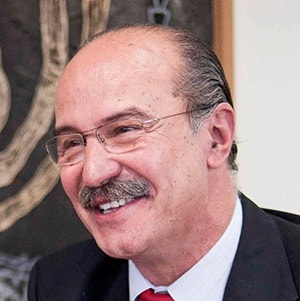 |
URUGUAY
Mario Bergara | GRADE: A—
Grana returned as president of the Central Bank of Uruguay last November, replacing Mario Bergara. Under his predecessor, the central bank abandoned the use of a single interest rate to fight inflation and replaced it with a basket of money-supply variables—a move that was not considered particularly effective.
“The bank uses money supply growth targets instead of benchmark interest rates,” says Lamoureux at Fitch Solutions, “but it rarely achieves its targets and often adjusts them reactively, raising the target after growth has exceeded the previous target and lowering it when it begins to fall. Its occasional interventions in the exchange rate market have helped manage the peso’s volatility, contributing to relatively stable inflation over recent months, and we expect that to continue, but inflation in Uruguay is likely to remain closely linked to market volatility.”
VENEZUELA
Ramón Lobo | GRADE: F
In June of last year, politician and diplomat Calixto Ortega Sánchez took up the role as president of the Central Bank of Venezuela, a post emptied of importance in an institution that has lost credibility. “The BCV has, after a long period of hyperinflation, taken steps to reduce liquidity in the Venezuelan economy and rein in price growth,” says Trahan at Fitch Solutions, “though at the cost of decimating lending in the country. The bank is highly exposed to political interference and will continue to be until there is a change in government in the country.”
EUROPE
BELARUS
Pavel Kallaur | GRADE: B+
Last year we lauded Kallaur, chair of the National Bank of the Republic of Belarus, for tightening monetary policy, which helped stabilize the exchange rate and lower inflation. In a January 2019 press release, the IMF stated that “prudent monetary policy, coupled with increasing central bank credibility,” had helped keep inflation at historically low levels (5% year-on-year in November 2018) despite rapid wage growth. The exchange rate and international reserves have also remained stable. However, “high dollarization” of the economy remains a concern and the medium-term growth outlook looks less promising, due in part to global trends, which suggests that a more vigorous economic reform program and structural reforms may be needed.
BULGARIA
Dimitar Radev | GRADE: A—
During his time as governor of the Bulgarian National Bank, Radev has championed reforming the country’s banking sector. He is now in the forefront of preparing Bulgaria to enter the European Exchange Rate Mechanism ahead of adopting the euro. The central bank’s supervisory practices must be brought in line with those of the European Central Bank, which is a natural progression of the reforms Radev has already spearheaded. doing all he can to maintain monetary policy stability and ensure a smooth transition from the lev to the euro.
CZECH REPUBLIC
Jiří Rusnok | GRADE: B+
As governor of the Czech National Bank, Rusnok is coming face to face with inflationary pressures at the upper end (2.9%) of his institution’s tolerance band. It helps that the central bank tightened monetary policy last year in response to rising wages and a weaker currency. Higher-than-expected core inflation poses a slight inflationary risk, the central bank says, although the last round of tightening should cause it to fall back towards the target level next year. The bank last increased interest rates in May, when the two-week repo rate rose by 25 basis points to 2%, the Lombard rate inched up to 3% and the discount rate climbed to 1%.
DENMARK
Lars Rohde | GRADE: C
While low interest rates are generally seen as a good thing, not everyone is happy with the National Bank of Denmark’s accommodative monetary policy, which has nudged key rates into zero or negative territory for a number of years. Recent media reports suggest Denmark has set a world record by going seven years with rates in negative territory.
The question for Rohde, and for governors of other central banks that have slashed rates to stimulate economic growth, is how long can rates remain this low? Local banks are complaining about the impact that low or negative interest rates are having on their margins, with some talking of introducing charges for large retail depositors. And there’s no room to cut rates if a recession hits and growth slows.
EUROPEAN UNION
Mario Draghi | GRADE: A—
With only a few months left in his eight-year tenure as president of the European Central Bank, Draghi may be running out of time to stimulate growth and bring inflation near the ECB’s historic 2% target. The ECB notes that inflation has been “persistently below” its aim. At a press conference in July, Draghi and ECB Vice President Luis de Guindos hinted at changing the target, inviting reflection on whether it should be “close to, but below 2%, or, should move to another objective.” Marion Amiot, senior economist at Standard & Poors, notes that this new idea could harm the bank’s credibility if it doesn’t work. But these are challenging times, and Draghi and the ECB at least earn marks for contemplating unconventional measures.
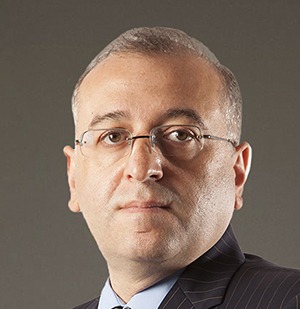 |
GEORGIA
Koba Gvenetadze | GRADE: A—
In its June 2019 report, the IMF approved of the general direction of the National Bank of Georgia’s monetary policy, stating that it “is rightly focused on price stability. As recent increases in inflation are driven by temporary factors, a neutral monetary policy stance remains appropriate.” Georgia’s economic performance remains robust, the IMF said, with resilient growth and inflation under control, although the authorities will need to be prepared for any negative turn due to external factors.
Governor Gvenetadze’s price-stability credentials stood out at the National Bank of Georgia’s September monetary policy meeting, where the refinancing rate was increased by 0.5 percentage points to 7% percent to counter an inflation rate (4.9%) that remained above the central bank’s target range. The bank credited amplified inflation expectations to depreciation of the currency, for which Gvenetadze blamed external shocks and reduced tourist flows into the country after Russian President Putin imposed a ban on travel to and from Russia.
HUNGARY
György Matolcsy | GRADE: B
Matolcsy was appointed to a second six-year term as governor of the Hungarian National Bank by Hungarian President János Áder last February; governors are only allowed to serve two terms. Unlike many of his peers who have relied on low interest rates to stimulate growth, Matolcsy has a reputation for using unconventional monetary policy tools, including two- and five-year interest-rate swaps and mortgage bond purchases.
Rising inflationary pressures suggest the bank’s loose monetary policy may be coming to an end. But for now, key policy rates remain unchanged, while the central bank’s Monetary Council focuses on other measures such as the Bond Funding for Growth Scheme (BGS), which aims to diversify funding to the domestic corporate sector. The BGS complements the Funding for Growth program launched at the beginning of this year to build a “healthier” corporate lending structure.
ICELAND
Már Guðmundsson | Ásgeir Jónsson | GRADE: A | Too Early To Say
Just as we announced grades for this year’s Central Banker Report Cards, the Icelandic government announced that Már Guðmundsson, governor of the Central Bank of Iceland since 2009, would be replaced from August 20 by Ásgeir Jónsson, an economist and academic. Jónsson works in the University of Iceland’s Economics Department, where he is dean of the faculty. In the run-up to his appointment, Guðmundsson and the bank’s monetary policy committee had already started cutting interest rates to address a downturn in the economic outlook. Instead of output growing by 1.8%, the bank forecast it would contract by 0.4% as a result of a slowdown in tourism and reduced marine exports.
Guðmundsson, who played an integral role in Iceland’s remarkable economic recovery following the 2008 financial crash, reacted swiftly, cutting the central bank’s key interest rate by 0.5 percentage points, followed by another, smaller cut in June.
NORWAY
Øystein Olsen | GRADE: B+
Rumors of a rate hike by the Central Bank of Norway circulated since last year as inflationary pressures rose. Come March, the central bank raised the policy rate by 0.25 percentage points to 1%, and inflation stayed above its 2% target range. Olsen looked ahead to further rate rises “in the course of the next half-year.” Then in June, despite greater global economic uncertainty, the policy rate inched up another 0.25%. With these rate increases, the central bank is swimming against the current; its counterparts have been keeping interest rates low—or even going into negative territory— in the face of trade tensions and uncertainty surrounding Brexit.
POLAND
Adam Glapiński | GRADE: C
Poland has long led the region in economic growth, and this looks set to continue as the National Bank predicts GDP growth of 3.9%–5.1% this year and 3%-4.8% in 2020. The benchmark interest rate has hovered at a low of 1.5% since 2015 and Glapiński says it’s likely to remain unchanged until at least 2022, despite rising consumption and wage growth, rising fuel and food prices, and inflation anticipated to top 3% in the coming year. But with an inflation target of 2.5%, plus or minus one percentage point, the central bank president clearly believes he has room to maneuver.
ROMANIA
Mugur Isărescu | GRADE: D
Isarescu, the longest-serving central bank governor in the world, has headed the National Bank of Romania since 1990 and was appointed to another five-year term in July. Economic growth is strong, with the IMF predicting it will remain above 4% this year before moderating to 3% in 2020. Inflation is expected to remain higher than the central bank’s target range. The policy rate has remained at 2.5% for some time and the deposit facility rate at 1.5%. The IMF points to “a lack of progress on structural reforms,” however, and the need for tighter monetary policy. For now, Isarescu appears to be more focused on sustaining economic growth than keeping inflation from accelerating.
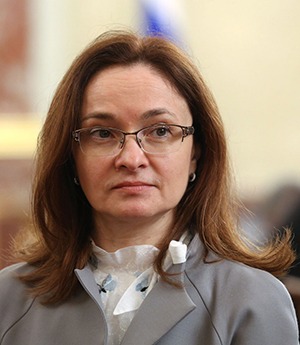 |
RUSSIA
Elvira Nabiullina | GRADE: A
Nabiullina has done what many central bank governors so often fail to do: get inflation under control. Just four years ago, inflation was in double figures; now, it is close to the Central Bank of Russia’s 4% target. Keeping price growth under what the IMF describes as a modest medium-term growth outlook has been the central bank’s central focus, but it is not the sole remit of monetary policy. Further structural, governance and institutional reforms are still needed.
Long seen as having the confidence of President Putin, Nabiullina notes several reasons for Russia’s slowing economic growth. While Putin reportedly blames external factors, including sanctions imposed on the country since its annexation of Crimea, Nabiullina points to domestic constraints. However, she remains cautious as to whether a program of national investment projects could boost private investment.
SWEDEN
Stefan Ingves | GRADE: B
With the repo rate unchanged since December at –0.25%, Ingves and the Sveriges Riksbank are grappling with when to raise rates. At the bank’s July monetary policy meeting, “some differences of opinion” arose as to the appropriate timing for a rate hike. Given “unexpectedly low inflation” in Sweden and abroad and uncertainty over global economic developments, Ingves is treading cautiously for now. Meanwhile, the nation continues its march toward a cashless society as the central bank explores the possibilities of an e-krona. The riksbank is in the process of selecting a supplier to help develop a platform for e-krona payments.
SWITZERLAND
Thomas Jordan | GRADE: C
While some central banks are raising rates, Jordan and the Swiss National Bank reportedly are pondering sending rates even deeper into negative territory. Interest on deposits with the bank have stood at -1.75% for some time, and the policy rate has been -0.75% since 2014.
Jordan’s efforts to reign in a strong franc have met with mixed success as investors continue to pile into the safe-haven currency in response to such developments as the U.S.–China trade war. At its June monetary policy meeting, the board introduced a new policy rate to communicate its decisions. “The policy rate replaces the target range for the three-month LIBOR used previously, and currently stands at -0.75%,” the central bank stated. The change has little initial effect, however, as the rate on sight deposits held at the bank is also -0.75%. Jordan’s expansionary monetary policy doesn’t appear likely to end any time soon.
TURKEY
Murat Uysal | GRADE: Too Early To Say
Murat Çetinkaya was removed as governor of the Central Bank of the Republic of Turkey by President Erdoğan in July, a move seen by many as threatening the bank’s independence. So far, Uysal, who was previously deputy governor, appears to be singing Erdoğan’s tune, having reduced the key policy rate by a whopping 425 basis points upon taking office, from 24% to 19.75% (now 16.5%), in an effort to boost economic growth. Although inflation has decreased slightly, it is still stubbornly high at almost 16%. However, the economy appears to be turning a corner, having recorded growth of 1.2% in the second quarter. Concerns about a double-dip recession seem to have abated for now.
UKRAINE
Yakiv Smolii | GRADE: C
Smolli’s rate hikes last year seem to have paid off with a declining inflation rate that is expected to meet the National Bank of Ukraine’s 5% target by late 2020. Core inflation was 7.4% year-on-year in July, and this has allowed the central bank to pursue a more expansionary monetary policy as it institutes a series of rate cuts, the most recent of those coming in September, when the bank cut the key policy rate again to 16.5%.
How much to cut rates by has been a subject of debate amongst members of the bank’s Monetary Policy Committee for the last few months. Inflation may be slowing, but the economy is not out of the woods yet. External pressures from a strained relationship and ongoing military conflict with Russia, as well as increasing trade tensions, means Smolli will need to be ready to put the brakes on monetary policy easing if the economic tide suddenly turns and inflation starts rising again.
UNITED KINGDOM
Mark Carney | GRADE: A—
Since its hike last August, the Bank of England’s base rate has remained at 0.75%, and the bank seems unlikely to raise rates until the Brexit outcome is clearer—unless inflation accelerates. Even then, the bank’s hands may be tied, given the ongoing political and economic uncertainty.
Ironically, just as opposition parties and some Conservative MPs voted against their government to prevent a no-deal Brexit in early September, Carney and the bank issued a statement that the impact of the UK leaving the EU in a “disorderly fashion” was not as bad as initially thought. Carney talked of “real progress” being made on the ground and in the financial system. A year earlier, he had predicted that GDP could fall by as much as 8% in the event of a crash-out. Based on the bank’s current predictions, a no-deal Brexit would result in a 5.5% decline in GDP and inflation more than doubling.
ASIA-PACIFIC
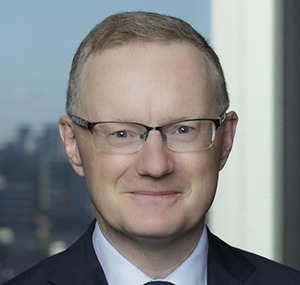 |
AUSTRALIA
Philip Lowe | GRADE: A
The Reserve Bank of Australia (RBA) lowered its policy rate by a half point, in back-to-back 25 basis-point cuts in June and July, to an all-time low of 1%. Governor Lowe said, in a July statement, “The uncertainty generated by the trade and technology disputes is affecting investment and means that the risks to the global economy are tilted to the downside.”
This despite the fact that Australia was setting new trade surplus records this year. Exports to China of iron ore, coal and liquid natural gas have continued to rise sharply, despite fears that China’s economy will slow.
Yet, the bank noted in August that weaker-than-expected consumption, high consumer debt and subdued wage growth continue to weigh on the outlook for the economy. Accordingly, while the RBA kept the policy rate unchanged in August, it said it would continue to monitor labor-market developments closely and be ready to ease policy further if needed.
AZERBAIJAN
Elman Rustamov | GRADE: B
The Central Bank of Azerbaijan lowered its refinancing rate by a quarter point to 8.25% in July, its fifth cut this year. Reasons Governor Rustamov cited for the adjustment included stable inflation and a sluggish oil sector. The government announced a 40% increase in the minimum wage in June on top of another increase earlier this year, sparking fears of inflation and a potential devaluation of the Azeri currency, the manat. Real GDP is expected to grow at a rate of just above 2% this year.
Azerbaijan hopes to boost growth to a healthier level. It is investing in petrochemicals to diversify its economy away from oil and gas, which account for 95% of exports. The country has constructed three new petrochemical plants in the past year and is also promoting the agricultural and mining sectors.
BANGLADESH
Fazle Kabir | GRADE: D
Bangladesh Bank left its policy repo rate unchanged at 6% through July. It last cut the rate in April 2018, ahead of the December general election, also lowering reserve requirements. Governor Kabir said a recent natural gas price increase and a new value-added tax could help tamp down inflation, which is currently around 5.5%.
At the request of the finance minister, Bangladesh Bank formed a committee in June to investigate the cause of record high loan defaults—but it also relaxed its loan write-off policy to make the situation appear less worrisome.
Meanwhile, Swift signed an agreement early this year to help the central bank rebuild its infrastructure following the February 2016 cyberheist of $81 million from Bangladesh Bank’s account with the Federal Reserve Bank of New York.
CAMBODIA
Chea Chanto | GRADE: B+
Cambodia’s banking system has modernized and become more integrated into the regional and global financial systems under Governor Chanto’s leadership. Thanks to its new policy instruments, the National Bank of Cambodia last year needed to intervene less heavily in the currency market to stabilize the riel exchange rate. Because Cambodia’s economy is highly dollarized, however, the central bank’s control of monetary policy is limited. To provide riel liquidity, it still had to hold 12 auctions last year using repurchase agreements.
Chanto says he seeks to “strike the right balance between financial inclusion and financial stability to boost economic activity.” Real GDP grew 7.5% last year, driven primarily by rapid growth in exports and foreign investment.
CHINA
Yi Gang | GRADE: C
The renminbi depreciated rapidly against the dollar as trade tensions escalated over the summer. However, Governor Yi, a US-educated economist who participated in several rounds of rollercoaster trade talks with the US and was director of the State Administration of Foreign Exchange from 2009 to 2016. He held posts on the Central Committee of the Communist Party and became central bank governor last year. He says he has all the monetary tools he needs to deal with the trade war’s fallout.
The weaker renminbi is helping China increase exports despite pressure from rising US tariffs. Dollar-denominated exports rose 3.3% in July from a year earlier, while imports fell 5.6% in the same period, but exports fell again in August. Real GDP grew at only a 6.2% annual rate in the second quarter of 2019, however, the weakest in 27 years.
HONG KONG
Eddie Yue | GRADE: Too Early To Say
Yue became chief executive of the Hong Kong Monetary Authority (HKMA) on October 1, succeeding Norman Chan, who is stepping down after a decade leading the HKMA. Hong Kong’s de facto central bank has kept the local currency pegged to the US dollar at a rate of around HK$7.80 to the greenback for the last 36 years.
The change of leadership comes as US-China trade tensions and slowing Chinese and global economies are challenging Hong Kong, which is also rocked by pro-democracy protests that began over a planned extradition law.Yue joined the HKMA in 1993 as a senior manager and rose to deputy chief executive in 2007. He is beginning a five-year term as chief executive.
INDIA
Shaktikanta Das | GRADE: Too Early To Say
GDP growth slipped to 5.8% in the first quarter of 2019, dropping India behind China as the fastest-growing large economy. In response, the Reserve Bank of India (RBI) has slashed its benchmark interest rate four times this year to 5.4%, the lowest in nine years. Each of its four policy meetings since Governor Das was installed last December has resulted in a rate cut.
The RBI has experienced turmoil of late. Das’s predecessor, Urjit Patel, resigned abruptly last year apparently over interference from the government, although he cited personal reasons. Viral Acharya, a deputy governor and strong advocate of central bank independence, stepped down in June, six months before his term was scheduled to end. The RBI is likely to face additional pressure to help boost the economy. India’s growth engine is sputtering, as corporate spending slows and trade worries grow. At the end of May, the US announced termination of India’s designation as a developing nation, ending an exemption that had allowed the country to export about 2,000 products to the US duty-free.
INDONESIA
Perry Warjiyo | GRADE: B
Bank Indonesia cut its benchmark policy rate by a quarter point to 5.75% in July, citing the global economic slowdown and low inflation as well as a stronger rupiah. The central bank has embarked on an accommodative monetary policy aimed at supplying sufficient liquidity to the banking system to support loan growth. Ahead of the rate cut, it lowered bank reserve requirements.
President Joko Widodo, who won a second term in May, has pledged faster infrastructure development and investment in human resources. He also plans to ease foreign-ownership limits to attract more foreign direct investment.
JAPAN
Haruhiko Kuroda | GRADE: B
Bank of Japan chief Kuroda finds himself in a tight spot. The safe-haven yen is rising, making it difficult to keep inflation, under 1% since last October, from dropping. Meanwhile, the yield on the 10-year Japanese government bond has fallen below the central bank’s targeted trading range and low interest rates are putting pressure on banks.
The Finance Ministry, rather than the central bank, makes any call to intervene in the currency market to restrain the yen. The ministry could be reluctant to intervene aggressively, however, at a time when Japan is negotiating a trade agreement with the US.
The central bank says it will not hesitate to add further stimulus if necessary, but it already holds more than 40% of the country’s outstanding government bonds and around three-quarters of its exchange-traded funds. It will have to be even more creative to meet its elusive 2% inflation target.
KAZAKHSTAN
Erbolat Dossaev | GRADE: Too Early To Say
Deputy Prime Minister Erbolat Dossaev replaced Daniyar Akishev as governor of the National Bank of Kazakhstan in February. Dossaev previously served as economy minister from 2013 to 2016. The change was made after then-President Nursultan Nazarbayev commanded the central bank to concentrate on stimulating the economy rather than controlling inflation.
Kazakhstan’s oil-based economy has suffered from falling oil prices. The country is scheduled to hold presidential and parliamentary elections next year and Nazarbayev has ordered the government and the central bank to boost GDP growth to at least 5% this year. Dossaev nevertheless appears to be trying to hold the line on inflation as well; the National Bank kept its overnight policy rate at 9% at its July meeting, noting that inflation increased in June to 5.4%, but then raised it by 25 bps in September.
KYRGYZSTAN
Tolkunbek Abdygulov | GRADE: C+
The National Bank of the Kyrgyz Republic lowered its policy rate by a quarter point in February and again in May, bringing it down to 4.25%, in an effort to stimulate economic growth in an environment of low inflation. Abdygulov returned in December 2017 as chair of the central bank after a brief time in other government roles. He had originally assumed the position in May 2014.
How much impact rate cuts will have is doubtful. The economy of this nation of 6.4 million people on China’s western border is expected to grow about 4% this year, and nearly one-third of GDP comes from remittances from migrant workers. Kyrgyzstan owes approximately 40% of its foreign debt to China. In August, the government suspended operations of a Chinese company at a Kyrgyz gold mine after clashes with local residents protesting environmental damages.
LAOS
Sonexay Sitphaxay | GRADE: Too Early to Say
Sithphaxay took up the governorship of the Bank of the Lao People’s Democratic Republic in September, and was approved by the National Assembly in December. He has held the benchmark interest rate unchanged at 4%, its 10-year low. The single-party socialist country’s economy is expected to grow by 6.6% this year, aided by strong fixed investment in infrastructure and growing exports of electricity. China’s $7 billion railway link to Laos is benefiting construction activity. The project is half completed and expected to open in 2021.
Sithphaxay says he will push commercial banks to lend more to small and medium enterprises to support steady growth of the economy. Meanwhile, more hydropower projects are under construction on the Mekong River. Electricity exports will soon surpass gold and copper mining as the country’s top foreign exchange earner.
MALAYSIA
Nor Shamsiah Mohd Yunus | GRADE: B
Taking over in June, Nor Shamsiah is the second woman to hold the position of Malaysia’s central bank governor. The first was Zeti Akhtar Aziz, a Global Finance Grade A winner who completed a 16-year term in 2016. Nor Shamsiah, who had been a deputy governor assisting investigations into the scandal at state investment fund 1Malaysia Development Berhad, earlier served as assistant director of the IMF’s monetary and capital markets division.
Bank Negara Malaysia, the central bank, held its key rate unchanged at 3.25% in July. It expects economic growth to be sustained and inflation to weaken this year following the new government’s removal of the 6% goods-and-services tax.
MONGOLIA
Nadmid Bayartsaikhan | GRADE: B
The main objective of the Bank of Mongolia is to ensure stability of the togrog currency. The central bank purchased 22 tons of gold last year, boosting reserves by $740 million to support the togrog. Mongolia also has some of the highest interest rates in the world. The central bank has kept its key policy rate unchanged at 11% so far this year to keep inflation from rising much above its targeted ceiling of 8%. Mongolia’s economy grew by 6.9% last year and real GDP growth is expected to slow to about 6.7% in 2019, due to lower mineral demand from China. Coal and gold are the country’s main mineral exports.
MYANMAR
Kyaw Kyaw Maung | GRADE: C
The Central Bank of Myanmar has kept its benchmark interest rate steady at 10% since 2012; and so far this year, real GDP growth has continued above 6%. Rising garment exports have made an important contribution, but the EU has threatened to remove trade preferences over human rights issues. Veteran Governor Kyaw Kyaw Maung, 80, says the Central Bank’s main goals are to achieve monetary stability, financial sector stability and settlement system development. Apart from a six-year hiatus from 2007 to 2013, he has headed the central bank since 1997—when Myanmar was still under military rule—and has been slow to modernize the banking system. Recent reforms include the opening of the insurance sector to foreign firms and easing of restrictions on foreign bank lending.
NEPAL
Chiranjibi Nepal | GRADE: C
Nepal Rastra Bank has held the bank rate unchanged at 6.5% so far this year. The country’s largely agrarian economy grew at a 6.7% rate in 2018, according the World Bank,r due to good monsoons and a steady inflow of remittances, which fueled public consumption. Nepal is investing in infrastructure to link its hydropower plants to the electricity grid. The World Bank projects growth in 2019 to hit 7.1%
Despite recent fast growth, the country remains the second poorest in South Asia after Afghanistan; many laborers travel to the Middle East to work in the construction industry. In May, the central bank banned the use of Chinese mobile payment platforms, including Alipay and WeChat Pay, saying the government is losing foreign income and tax revenue.
NEW ZEALAND
Adrian Orr | GRADE: B—
The Reserve Bank of New Zealand lowered its official cash rate by a half point to 1% in August and indicated that it could soon adopt unorthodox policies to stimulate growth. Governor Orr, who assumed office in March of last year, warned that the economic outlook was deteriorating. The rate cut “does not rule out” further rate reductions this year, he said, adding that a negative interest rate scenario is possible.
Under Orr, the central bank loosened its strict inflation focus and now follows dual employment and price stability objectives in setting monetary policy. Rate decisions are made by a committee of central bank officials and some external members. Orr has described the US-China trade dispute as a major risk to New Zealand’s economy.
PAKISTAN
Reza Baqir | GRADE: Too Early To Say
In May, the State Bank of Pakistan replaced its discount ceiling rate with a new policy rate; at its meeting two months later, it raised the new benchmark by a full percentage point, to 13.25%, as inflation picked up. Baqir, who had previously managed a large loan to Egypt as senior resident representative of the International Monetary Fund (IMF), was selected in May as governor of the State Bank to help negotiate a new IMF loan for his native country.
The IMF approved a three-year, $6 billion loan package in July to help Pakistan weather a balance of payments crisis. The loan, which comes with significant economic reform requirements, will unlock an additional $38 billion from Pakistan’s international partners. The country already has received billions of dollars in loans from China, Saudi Arabia and the United Arab Emirates.
PHILIPPINES
Benjamin Diokno | GRADE: Too Early To Say
Bangko Sentral ng Pilipinas cut its benchmark interest rate by a quarter point in May and another quarter point in August, to 4.25%, to counter slowing growth and cooling inflation. Governor Diokno, who was appointed in March, says the current economic environment “provides room for a further reduction in the policy rate as a pre-emptive move against the risks associated with weakening global growth.”
Diokno, who previously was President Rodrigo Duterte’s budget secretary, replaced Nestor Espenilla Jr, who died in February. He faces a challenge helping to revive growth. The Philippine economy expanded at an annual rate of 5.5% in the second quarter of 2019, the slowest in more than four years.
SINGAPORE
Ravi Menon | GRADE: B+
Menon’s term as managing director of the Monetary Authority of Singapore (MAS) was extended another two years in May; he has held the position since 2011. The MAS manages policy through exchange-rate adjustments rather than interest rates; the Singapore dollar rises and falls against a trade-weighted basket of currencies. In May, the country made a US Treasury watchlist for currency manipulation; but MAS officials have said currency interventions are solely to control inflation, not to boost exports. The MAS, effectively Singapore’s central bank, said in May that it will disclose more information on the actions it takes to implement monetary policy, including a release of data on foreign exchange intervention every six months. The economy grew just 0.1% in the second quarter of this year, the worst result since it contracted in 2009 during the global financial crisis. Menon cites the US-China trade dispute, which he says has hit investments, trade and manufacturing.
SOUTH KOREA
Lee Ju-yeol | GRADE: A
The Bank of Korea lowered its base rate by a quarter point to 1.5% in July, marking its first cut in three years. The move came amid a trade dispute with Japan, as well as the escalating tariff war between the US and China. South Korea’s real GDP is estimated to grow 2.6% this year and inflation only 1.7%, well below the central bank’s 2% target.
Since then, the trade front has worsened. Japan announced that it would tighten control over chemicals crucial to producing semiconductors in South Korea, because it believed Seoul was leaking sensitive information to North Korea. South Korean consumers responded by boycotting Japanese brands.
SRI LANKA
Indrajit Coomaraswamy | GRADE: B
The Central Bank of Sri Lanka lowered its benchmark interest rate by a half point to 7.5% at its May meeting and dropped it to 7% in August. The cuts were driven by increased trade tensions, weakened business confidence and a slowdown in global economic growth, officials said, noting that other emerging-market central banks have also relaxed monetary policy to support economic growth in an environment of subdued inflation.
The Easter Sunday (April 21) bombings of hotels and churches that killed more than 250 people in and around Colombo and in other parts of the country affected business confidence and disrupted tourism and related activities, the central bank said. Real GDP growth and inflation rate are both likely to be near 3.5% this year.
TAIWAN
Yang Chin-long | GRADE: A
The Central Bank of the Republic of China (Taiwan) has held its key policy rate at 1.375% for the year to date, continuing an accommodative monetary policy aimed at supporting economic growth. The central bank targets the money supply as its medium-term benchmark. Yang took the helm of the central bank in February of last year after serving as deputy governor. Taiwan’s track record on ensuring price stability surpasses most double-A- and triple-A-rated countries, Moody’s Investors Service said in July 2019. The central bank intervenes in the foreign exchange market from time to time in smoothing operations: In May, after the Taiwan dollar came under pressure amid rising trade tensions between Washington and Beijing, the bank said it had stepped in “to smooth out the high volatility” by buying the local currency. Real GDP grew 2.4% in the second quarter, surpassing the growth rates in South Korea, Hong Kong and Singapore.
THAILAND
Veerathai Santiprabhob | GRADE: B
The Bank of Thailand cut its key rate by a quarter point in August to 1.5%, marking the first time it has lowered rates in more than four years. The cut was designed to not only boost the economy, but restrain the strong baht, the best-performing currency in Southeast Asia this year. A rising baht hurts the competitiveness of Thai exports as well as its important tourism industry, at a time when tourist arrivals from China are declining. The strong currency’s impact on the economy could be compounded by global trade tensions, the central bank says. The economy grew 4.1% in 2018 but is expected to slow to 3.5% this year, in part due to the impact of a drought on agriculture.
UZBEKISTAN
Mamarizo Nurmuratov | GRADE: C
The Central Bank of Uzbekistan has held its refinancing rate at 16% so far this year to fight inflation, as the economy opens further to private investment. GDP growth picked up to 5.3% in the first half of 2019 on a rise in construction activity and gains in industrial production and mining, and hit 5.8% in July. Most jobs currently are in agriculture and services, but market-oriented reforms aim to create more diverse jobs for the fast-growing working-age population.
The chemicals sector is widely regarded as having potential, since Uzbekistan produces its own natural gas and has potash and phosphate reserves. Rising natural gas exports, along with capital investment and consumer spending, are helping to boost growth.
VIETNAM
Le Minh Hung | GRADE: B+
The State Bank of Vietnam has held its refinancing rate at 6.25% so far this year. Real GDP rose 6.7% at an annual rate in the second quarter, as the country became a major alternative export hub to China. Companies from Vietnam’s neighbor to the north are setting up manufacturing operations there to escape US tariffs on Chinese goods. Vietnam’s exports to the US rose 27% from a year earlier in the first half of 2019.
However, Vietnam was one of nine nations the US Treasury added to its currency practices watchlist in May. Governor Hung counters that the total amount of Vietnam’s net currency intervention is lower than the amount the US stipulates for countries to be named to the list. “We do not use macroeconomic policies, including monetary and exchange rate policy, to create a competitive advantage for unfair international trade,” he said.
Middle East & Africa
ALGERIA
Ammar Haiwani | GRADE: Too Early To Say
The Bank of Algeria has left its discount rate unchanged at 3.75% this year. Interim President Abdelkadar Bensalah appointed Haiwani, a former deputy governor of the central bank, as acting governor in April, following the February 22 uprising against President Abdelaziz Bouteflika’s two-decade rule.
Most major oil companies have suspended decisions to invest in the country due to political instability, although Italian energy company ENI renewed its gas supply contract. Algeria needs technology and expertise from international oil companies to keep its energy exports flowing.
ANGOLA
José de Lima Massano| GRADE: B
The National Bank of Angola cut its benchmark rate by three-quarters of a percentage point in January and another quarter point in May, bringing it down to 15.5%. The inflation rate fell to around 17% at midyear from more than 20% in 2018. Angola is Africa’s second-largest oil exporter after Nigeria, but production has been declining and the economy has entered a recession. Rising consumer spending and robust investment are expected to lead to expansion in 2020.
Since January 2018, when the authorities ended the fixed exchange rate, the kwanza currency has depreciated by 52% against the dollar and continues to set record lows. The International Monetary Fund completed its first review of Angola’s economic reform program in June, noting that the authorities “have demonstrated strong commitment to policies under the Fund-supported program.” However, further progress is challenged by “a weakened external environment, notably the heightened volatility in the international price of crude oil.”
BAHRAIN
Rasheed Al Maraj | GRADE: B—
The Central Bank of Bahrain lowered its key policy rate—the one-week deposit rate—by 25 basis points in July, following the Federal Reserve’s decision to cut rates for the first time since 2008. The Bahraini dinar is pegged to the dollar. The economy grew 1.8% in 2018, and the International Monetary Fund expects it to expand at about the same rate this year. Financial services are a mainstay of the economy, and Bahrain aims to leverage fintech innovation.
Bahrain released a fiscal consolidation program last October that is tied to five years of aid worth $10 billion from Saudi Arabia, the United Arab Emirates and Kuwait. Although the island nation lacks the hydrocarbon wealth of its neighbors, a large oil and gas field was discovered offshore last year. Bahrain is also expanding its output of aluminum.
BANK OF CENTRAL AFRICAN STATES (BEAC)
Abbas Mahamat Tolli | GRADE: C
The BEAC has held its official prime lending rate unchanged at 3.5% this year, after raising it by 55 basis points in October 2018. This central bank serves six central African countries: Cameroon, Central African Republic, Chad, Equatorial Guinea, Gabon and Republic of the Congo (Congo-Brazzaville). The six comprise the Central African Economic and Monetary Community (CEMAC); its official currency, the Central African CFA franc, is fixed to the euro.
The CEMAC countries have been suffering from a lack of foreign exchange as a result of declining oil prices. The IMF has recommended stricter implementation of new forex regulations, requiring banks under BEAC’s jurisdiction to surrender their foreign currency holdings to the central bank.
BOTSWANA
Moses Pelaelo | GRADE: A—
The Bank of Botswana has kept its benchmark lending rate steady at a record low 5% since October 2017 to stimulate economic growth amid low inflation. The central bank uses a crawling peg system of exchange rate adjustments, whereby the pula is allowed to fluctuate within a band based on the inflation outlook. Following its June meeting, the central bank pronounced the inflation outlook positive amid subdued domestic demand.
The economy is expected to operate close to full capacity in the short-to-medium term, with real GDP growth slowing to about 4.2% this year from 4.5% in 2018. The nation has low public debt, but the economy needs diversification; diamonds account for about 80% of Botswana’s exports.
CENTRAL BANK OF WEST AFRICAN STATES (BCEAU)
Tiémoko Meyliet Kone | GRADE: B+
The central bank of the West African Economic and Monetary Union serves Benin, Burkina Faso, Cote d’Ivoire, Guinea-Bissau, Mali, Niger, Senegal and Togo. Real GDP growth in these countries averaged more than 6% in 2018 for the seventh straight year. The BCEAU has kept the key interest rate unchanged at 4.5% this year as inflation has remained low, reflecting the CFA franc’s peg to the euro. The IMF projects real GDP growth in the region to stay above 6% over the medium term, and lauds the member countries for having made a strong commitment both to national fiscal consolidation and to development plans aimed at improving competitiveness.
DEMOCRATIC REPUBLIC OF CONGO
Déogratias Mutombo Mwana Nyembo | GRADE: C+
The Central Bank of the Congo likes to change interest rates in large increments. In April, it lowered its base interest rate by 500 basis points to 9%. One year prior, it cut the rate by 600 basis points to 14%. In both instances, it cited an improving economic outlook.
Once known as Zaire, the DR Congo is the second-largest country in Africa by area. It is a major mineral exporter, with 80% of the country’s export revenues coming from the mining sector. Declines in the prices of copper and cobalt have increased pressure on the government to diversify the economy. GDP growth is expected to slow to around 4.3% this year, from 5.8% in 2018.
EGYPT
Tarek Amer | GRADE: A—
The Central Bank of Egypt cut its overnight interest rate in February by a full percentage point to 15.75%, citing lower inflation and an improving economy. In June, Amer announced Egypt was rejecting the IMF’s offer of a new economic program, saying that as the fastest-growing economy in the Middle East, it is in no need of further reforms.After completing the fifth and final review of Egypt’s $12 billion, three-year extended fund facility in July, the IMF said the program had achieved its main objectives and that the country’s macroeconomic situation has improved markedly. The elimination of most fuel subsidies will encourage energy efficiency, the IMF noted, and recommended deepening reforms.
ETHIOPIA
Yinager Dessie | GRADE: B—
Africa’s second-most-populous nation, with some 112 million people, Ethiopia is both its fastest growing and poorest. Its limited competitiveness and underdeveloped private sector are hampering job creation, according to the World Bank. Declining export earnings and rising inflation have exacerbated a shortage of foreign exchange. The country has a large foreign debt, much of it owed to China.
The National Bank of Ethiopia has kept its official rate unchanged at 7% this year. After issuing a directive in the spring that international oil companies must open a foreign-currency bank account in Ethiopia supervised by the central bank, rather than relying on offshore accounts, the bank faced so much pushback from the companies that the prime minister withdrew the directive in July.
GAMBIA
Bakary Jammeh | GRADE: C
The Central Bank of the Gambia cut its policy rate a full percentage point to 12.5% in February, saying that inflation was under control and the dalasi currency was stable. Real GDP growth rose to 6.5% last year from 4.8% in 2017, mainly due to growth in the services sector.
However, Jammeh said both flooding and drought continue to affect the agricultural sector, on which most of the population depends for its livelihood. Peanuts are the largest earner of foreign exchange; Gambia’s largest trading partners are China, India, Brazil, Senegal and the Netherlands.
GHANA
Bakary Jammeh | GRADE: B
The Bank of Ghana lowered its main policy rate a full percentage point to 16% at its January meeting, and has since left it at that level. Economic growth is expected to remain strong in the second half of 2019, the central bank said, while inflation has stayed within its target range for more than a year. Nonetheless, central bank officials expressed concern about global trade and geopolitical tensions.
Ghana ended a nearly $1 billion IMF extended fund facility in April under which the central bank stopped funding the government’s budget deficit. Ghana’s macroeconomic performance has significantly improved in the past two years, the fund said, also noting that the central bank has resolved nine insolvent banks over a period of 18 months.
IRAQ
Ali Mohsen Ismail Al-Alaq | GRADE: B+
The Central Bank of Iraq has succeeded in stabilizing financial and economic conditions in the country since the collapse of oil prices in 2014, and has amassed foreign currency reserves of $65 billion. Al-Alaq and his staff have controlled inflation and stabilized the exchange rate of the Iraqi dinar while leading the fight against corruption. They also oversaw $5 billion of finance programs to boost economic development.
The CBI signed a memorandum of understanding with the IMF and World Bank to evaluate and develop the nation’s banking and financial sector. A robust plan to restructure large public banks, coupled with enhanced supervision, is essential, the IMF says. The CBI has also introduced foreign exchange window sales, helping to fund Iraqi banks’ international settlements.
ISRAEL
Amir Yaron | GRADE: Too Early To Say
The Bank of Israel left its headline interest rate unchanged at 0.25% at its July meeting after inflation rose to 1.5%, the highest in six years. Analysts say conditions could support an interest rate increase in the future, except for the appreciation of the shekel. Yaron has urged the government to cut spending and raise taxes to curb its widening budget deficit.
Yaron was appointed to head the central bank last December, replacing repeat Grade-A governor Karnit Flug, the first woman to head the institution. Yaron previously was professor of finance at the Wharton School of the University of Pennsylvania. While Flug focused on monetary policy, Yaron is more concerned with increasing competition between the country’s banks, and has spoken about the need to introduce technological innovation into the financial system.
JORDAN
Ziad Fariz | GRADE: C
The Central Bank of Jordan lowered its policy rate by 25 basis points in August to 4.5%, following a similar cut by the US Federal Reserve; with its currency pegged to the dollar, Jordan typically follows the Fed. The latest rate cut was prompted by a decrease in inflation and improvement in the balance of payments, the central bank said.
Saudi Arabia, along with Kuwait and the United Arab Emirates, assembled a $2.5 billion package in June to support Jordan’s struggling economy. The government fell last year after protests erupted over spending cuts and tax hikes under an IMF reform program, and the unemployment rate hit a 25-year high of 19%.
KENYA
Patrick Njoroge | GRADE: B—
The Central Bank of Kenya held its benchmark interest rate at 9% in July, despite a flareup in inflation. The government expects real GDP growth to remain above 6% this year, although it is concerned about the effect of a drought on the nation’s agriculture and uncertainties surrounding global trade frictions.
Njoroge was reappointed in June to another four-year term as governor of the central bank. A 2016 law capping banks’ lending interest rate at four percentage points above the central bank’s benchmark rate is pushing Kenyan banks to expand regionally. The law was aimed at lowering borrowing costs, expanding access to credit and increasing the return on savings, but it has had the opposite effect, the IMF says.
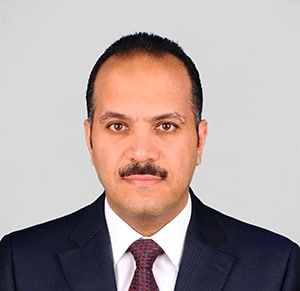 |
KUWAIT
Mohammad Yousef Al-Hashel | GRADE: A
The Central Bank of Kuwait has held its policy rate unchanged at 3% this year. It didn’t follow suit after Federal Reserve raised rates in September and December 2018. Al-Hashel said that decision was based on a desire to bolster economic growth and improve the competitiveness of the dinar, which is pegged to a basket of currencies, including the dollar.
Economic growth is expected to accelerate this year, supported by government spending and credit expansion. The energy sector will be constrained, however, by OPEC-led oil production cuts. Index provider MSCI plans to upgrade Kuwait to emerging market status next June, potentially attracting billions of dollars of investor flows to the country’s stock market.
LEBANON
Riad Salamé | GRADE: A
Salameh, first appointed governor of the Banque du Liban in 1993, has used creative strategies to keep borrowing costs down in an economy where the ratio of government debt to GDP has reached 160%. Any decline in the Lebanese pound against the dollar would push the government’s debt obligations even higher.
The IMF urged the central bank in July to “stand back from quasi-fiscal operations,” which it said could threaten the bank’s credibility. At issue was the government’s proposal for the central bank to purchase $7.3 billion of Treasury bills at far below-market rates. The government’s 2019 draft budget seeks to lower the deficit by reforming the state-owned electricity sector.
MADAGASCAR
Alain Rasolofondraibe | GRADE: B
The Central Bank of Madagascar has held its key rate at 9.5% this year, as the economy has continued to grow at its 2018 rate of about 5.2% on the back of rising exports. Madagascar’s main foreign exchange earners are cash crops, metals and business-process outsourcing. Inflation is expected to hover around 5% until at least 2021 according to the World Bank, which anticipates that central bank intervention in the foreign exchange market will remain limited to smoothing operations and meeting its foreign-reserves target.
MAURITANIA
Abdel Aziz Ould Dahi | GRADE: B—
The northwest African nation has invested heavily in renewable energy and now exports electricity to neighboring countries. Offshore gas development is expected to spur future economic growth, with gas exports expected to begin in 2022. Minerals and fishing currently account for the bulk of the country’s exports.
The Central Bank of Mauritania has kept its discount rate unchanged at 6.5% for the year to date, and the IMF expects economic growth to accelerate to 6.7%, from 3.6% in 2018. The central bank, meanwhile, has introduced new monetary policy instruments to improve liquidity management.
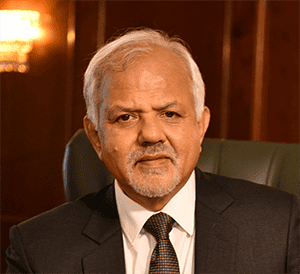 |
MAURITIUS
Yandraduth Googoolye | GRADE: B
Mauritius, an island nation in the Indian Ocean, is an international financial center with an upper-middle income standard of living. The Bank of Mauritius cut its key repo rate by 15 basis points in August to 3.35%, as low inflation gave it cover to act against the potential effects of a slowdown in the global economy. Real GDP growth has averaged close to 4% for the past decade.
Mauritius emerged as a global financial-services center by upgrading its telecommunications infrastructure and introducing reforms including a tax regime that encourages foreign participation in the economy. About 40% of India’s foreign direct investment is channeled through Mauritius, which also acts as its neighbor’s gateway to Africa. Other key sectors of Mauritius’s diversified economy include textiles, seafood processing, technology, business outsourcing, luxury real estate and tourism.
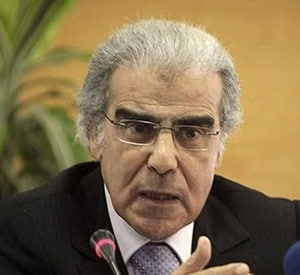 |
MOROCCO
Abdellatif Jouahri | GRADE: A
Bank al-Maghrib has held its key rate at 2.25% since 2016. Current borrowing costs are consistent with the medium-term outlook for the economy and inflation, which has slowed to about 0.6%, the central banks says. Real GDP growth is expected to slow slightly, to about 2.8% this year from 3% in 2018, before rising to 4% in 2020. The automotive sector accounts for more than a quarter of exports, with several French automakers operating production plants in the country,
Morocco is improving its business environment and infrastructure to attract more foreign investment. Agriculture, tourism, automotive-parts production, phosphates and textiles are the mainstays of the economy. Casablanca, the largest city in the Berber world, is also the country’s primary industrial zone.
MOZAMBIQUE
Rogério Zandamela | GRADE: B—
The Central Bank of Mozambique lowered its benchmark rate by a full percentage point in June and followed up with an additional half-point cut to 12.75% in August, citing low inflation and a weakening economy. The inflation rate peaked at 26% in 2016 in the midst of a hidden debt crisis. It is now running at just above 2%.
President Filipe Nyusi and opposition leader Ossufo Momade signed an agreement in August to end armed hostilities, possibly opening the way to increased investment and renewed economic growth. Mozambique’s currency, the metical, rose 4.5% from its low in April, which was set after tropical cyclones Idai and Kenneth hit Mozambique. The IMF projects real GDP growth could slow to 1.8% this year from 3.3% in 2018, due to damage to infrastructure and productive capacity.
NAMIBIA
Ipumbu Shiimi | GRADE: C+
The Bank of Namibia lowered its benchmark repo rate in August by a quarter point, to 6.5%, in an attempt to stimulate the economy and maintain the peg of the Namibian dollar to the South African rand. The Namibian economy is struggling to eke out its first expansion in three years, with public-works projects expected to spur growth in the construction sector. Any sustainable recovery is likely to be driven by increasing activity in uranium and diamond mining.
Shiimi attributes an increase in inflation to 4.5% in the first four months of 2019—from 3.6% in the same period a year earlier—to higher food and transport prices. In an effort to boost the property market, Namibia increased the loan-to-value ratio for home mortgages.
NIGERIA
Godwin Emefiele | GRADE: C
The Central Bank of Nigeria lowered its policy rate by a half point to 13.5% in March, following President Muhammadu Buhari’s reelection. The former general has focused on fighting corruption and addressing rising insecurity, while Africa’s largest economy—and its largest oil producer—has struggled to gain traction. Buhari nominated Emefiele in May to a second five-year term as central bank governor, knowing he would continue unorthodox expansionist policies including heavy intervention in the foreign exchange market to protect the naira.
Buhari told the central bank in August to stop providing foreign exchange for food imports. “The foreign exchange will be conserved and utilized strictly for diversification of the economy,” the central bank said in a statement, “and not for encouraging more dependence on foreign food import bills.” In July, the central bank began requiring Nigerian banks to maintain a minimum loan-to-deposit ratio of only 60%, forcing them to make more risky loans.
OMAN
Tahir bin Salim Al Amri | GRADE: B
Interest rates in Oman are determined by market forces; the central bank only sets the interest rate ceiling on personal loans. Given the rial’s peg to the dollar, monetary policy, too, has constraints. The benchmark repo rate in August was 2.9%, edging down slightly after the Federal Reserve’s late-July cut.
Real GDP growth is projected to slow to 1.2% this year from 2.1% in 2018. The World Bank predicts a one-off spike in growth to 6% in 2020, as the government increases investment in the Khazzan gas field. The budget deficit is expected to rise to 12% of GDP this year due to high public spending and lower oil prices. However, the outlook for the banking sector is favorable, particularly in Islamic finance. In January, Oman joined the Islamic Financial Services Board, an international standards-setting organization for Shariah-compliant institutions and regulators.
QATAR
Abdulla Bin Saoud Al-Thani | GRADE: A—
Qatar Central Bank lowered its benchmark interest rate by a quarter point to 4.75% on August 1, one day after the Federal Reserve made a similar move. The Qatari riyal is pegged to the dollar; the central bank said it acted “taking into account the evolving domestic and international macroeconomic developments.” Qatar’s economy has successfully weathered the blockade by its neighbors and is gaining momentum, with important new gas projects coming online and preparations continuing for hosting the FIFA World Cup in 2022.
Real GDP growth is expected to rise from 2.1% in 2018 to 3.4% by 2021, according to the World Bank. Like other oil-producing countries in the Gulf, Qatar is going through a period of deflation, apparently unaffected by the introduction of “sin taxes” of 100% on tobacco, alcohol and energy drinks, and 50% on soda.
RWANDA
John Rwangombwa | GRADE: B+
The National Bank of Rwanda cut its key interest rate by a half point, to a record-low 5% in May, to sustain still fast-growing domestic demand. Rwangombwa said the economy has experienced deflation in food prices due to a good harvest, but the central bank expects inflation to rise to 3% by the end of 2019 from 1.4% last year. The governor said he expects exchange-rate pressures to remain subdued. Real GDP rose 8.6% last year and is projected to grow 7.8% this year.
The central bank introduced inflation targeting in March with a target of 5%, plus or minus three percentage points. It plans to introduce more-stringent capital requirements for financial-services companies over the next five years.
SAUDI ARABIA
Ahmed Alkholifey | GRADE: A—
The Saudi Arabian Monetary Authority (SAMA) lowered its official repo rate by a quarter point to 2.75% in July, aiming to support growth in the economy. The move followed a similar cut by the Federal Reserve, given that the riyal is pegged to the dollar. The economy slowed in the first quarter, with real GDP up 1.7%. That compares with growth of 2.2% in 2018, following a decline of 0.7% in 2017.
The oil sector has weakened due to production cuts, and economists say there are signs the non-oil sector is beginning to soften as well. While oil still accounts for 63% of government revenue, non-oil revenues rose 90% last year, with more than half of the increase coming from taxes. SAMA warns that a global economic slowdown, and its fallout on the oil market, could affect the economy’s growth.
SOUTH AFRICA
Lesetja Kganyago | GRADE: B
The South African Reserve Bank lowered its benchmark repo rate by a quarter point, to 6.5% in July. Real GDP had contracted by 3.2% in the first quarter as electricity shortages and labor force strikes weakened investment and tamped down consumer spending. President Cyril Ramaphosa reappointed Kganyago as central bank governor for a second five-year term, offering a vote of confidence in his policies.
Kganyago noted in June that South Africa’s disappointing economic performance over the past decade has fueled calls to expand the central bank’s mandate to directly stimulate growth and address unemployment. However, he added that the South African Reserve Bank’s current mandate to achieve and maintain price stability is “enshrined in the Constitution” and that by keeping prices stable, it aims to create the necessary environment for sustainable growth and development.
TANZANIA
Florens Luoga | GRADE: C
The Bank of Tanzania has kept its discount rate unchanged at 7% this year, but it cut bank reserve requirements to 7% from 8% in July, in a move to stimulate more lending and thereby the economy. “There is still a need for more growth of credit in order to support sustainable economic growth,” the central bank explained in a published statement.
Tanzania is the second-largest economy in East Africa, with a population of more than 55 million people. Foreign investment fell sharply after the government intervened in the gold mining industry—mining accounts for more than half of the country’s exports. Agriculture, on the other hand, is the domestic-economy mainstay. The Tanzanian economy has lost some momentum this year, however, with agricultural exports falling and the current account deficit rising.
TUNISIA
Marouane el-Abassi | GRADE: C
The Central Bank of Tunisia raised its key rate a full percentage point to 7.75% in February to combat inflation, in line with economic measures backed by the IMF. El-Abassi, a former World Bank economist, was named governor last year. President Beji Caid Essebsi died on July 25 and a new election was scheduled for mid-September.
Economic growth is slowing this year in the wake of fiscal consolidation at home and the slowdown in Europe. Tunisia reached a $2.8 billion loan deal with the IMF last year, but many agreed-upon reforms have not yet been implemented. Growth is anticipated to pick up next year, however, following the start of the long-delayed $1.2 billion Nawara gas project.
UGANDA
Emmanuel Tumusiime Mutebile | GRADE: C—
The Bank of Uganda held its key lending rate unchanged at 10% through its August 15 meeting, as the economy slowed in the first half of this year. Tumusiime-Mutebile said escalating global trade tensions, unfavorable weather and delays in infrastructure projects were affecting growth, projected to be about 6% this year.
Several Bank of Uganda officials were arrested in June, along with customs officials and airport police officers, after central bank staff reported an anomaly in an April armored-car delivery of the country’s currency, which was printed in Germany. Tumusiime-Mutebile asked the government’s anticorruption unit to investigate, adding that the bank is committed to maintaining the integrity of its operations.
UNITED ARAB EMIRATES
Mubarak Rashed Al Mansoori | GRADE: B
The Central Bank of the UAE lowered its benchmark interest rate by a quarter point to 2.5% in July, following a similar cut by the US Fed; the UAE dirham is pegged to the dollar. Real GDP is expected to grow 2.6% this year and to accelerate to 3% in 2020, when Expo 2020 Dubai is likely to boost some industries. OPEC-led production cuts will continue to weigh on the oil sector.
Governor Al Mansoori was reappointed for another four-year term last December. The central bank introduced new regulatory requirements in June to curb money laundering and organized financial crime. All financial institutions in the UAE must report any suspicious transactions to goAML, a platform developed by the United Nations. The UAE is the first country in the Gulf to go live with the platform.
ZIMBABWE
Mubarak Rashed Al Mansoori | GRADE: D
The Reserve Bank of Zimbabwe raised its overnight lending rate by 20 percentage points on September 13 to an all-time high of 70% to curb the world’s highest inflation rate, estimated at between 300% and 570%. The country’s statistics office does not release timely inflation data. The increase in the interest rate was decided by the reserve bank’s new monetary policy committee, which was appointed three days earlier.
A protracted cash shortage has worsened steadily since Mangudya was appointed to his current post by former president Robert Mugabe in 2014. The government banned the use of foreign currencies earlier this year and reintroduced the Zimbabwe dollar, which was abandoned in November 2009, when the country’s inflation rate was 89.7 sextillion percent. Since the February currency reform, the exchange rate has depreciated, according to an IMF delegation that recently visited the country. Zimbabwe must implement an IMF staff-monitored program (SMP) to access IMF funding.
HEAD OF THE CLASS — Earning “A” Grades in 2019
Country | Central Bank Governor | 2019 Grade |
|---|---|---|
Honduras | Wilfredo Cerrato | A |
Mexico | Alejandro Diaz de Leon | A |
Iceland | Már Guomundsson | A |
Russia | Elvira Nabiullina | A |
Australia | Philip Lowe | A |
South Korea | Lee Ju-yeol | A |
Taiwan | Yang Chin-long | A |
Kuwait | Mohammad Yousef Al-Hashel | A |
Lebanon | Riad Salameh | A |
Morocco | Abdellatif Jouahri | A |
MERIT WINNERS — Central Bankers Earning “A—” Grades in 2019
Country | Central Bank Governor | 2019 Grade |
|---|---|---|
Chile | Mario Marcel Cullell | A— |
United States | Jerome Powell | A— |
Uruguay | Alberto Grana | A— |
Bulgaria | Dimitar Radev | A— |
European Union | Mario Draghi | A— |
Georgia | Koba Gvenetadze | A— |
United Kingdom | Mark Carney | A— |
Botswana | Moses Pelaelo | A— |
Egypt | Tarek Amer | A— |
Saudi Arabia | Ahmed Alkholifey | A— |
Qatar | Abdulla bin Saoud Al-Thani | A— |
The Americas
Country | Central Bank Governor | 2019 Grade | 2018 Grade |
|---|---|---|---|
Argentina | Guido Sandleris | C | Too Early to Say** |
Bahamas | John Rolle | B | B |
Bolivia | Pablo Ramos Sánchez | C | B |
Brazil | Roberto Campos Neto | Too Early to Say | A—** |
Canada | Stephen Poloz | B— | B+ |
Chile | Mario Marcel Cullell | A— | A |
Colombia | Juan José Echavarria | B+ | A— |
Costa Rica | Rodrigo Cubero Brealey | C+ | C+** |
Dominican Republic | Héctor Valdez Albizu | B+ | B+ |
Eastern Caribbean Central Bank | Timothy Antoine | B | B |
Ecuador | Verónica Artola | B+ | B+ |
El Salvador | Oscar Cabrera Melgar | B— | B+ |
Guatemala | Sergio Francisco Recinos Rivera | C | B— |
Honduras | Wilfredo Cerrato | A | Too Early To Say |
Jamaica | Richard Byles | C | B—** |
Mexico | Alejandro Díaz León | A | Too Early to Say |
Nicaragua | Leonardo Ovidio Reyes Ramirez | C | C |
Paraguay | José Cantero Sienra | B | A** |
Peru | Julio Velarde Flores | B+ | B+ |
Trinidad and Tobago | Alvin Hilaire | C+ | C+ |
United States | Jerome Powell | A— | Too Early To Say |
Uruguay | Alberto Grana | A— | A—** |
Venezuela | Ramón Lobo | F | Too Early to Say |
*CB governor was not graded in 2018. **Applied to a prior CB governor.
Europe
Country | Central Bank Governor | 2019 Grade | 2018 Grade |
|---|---|---|---|
Belarus | Pavel Kallaur | B+ | B |
Bulgaria | Dimitar Radev | A— | A— |
Czech Republic | Jiri Rusnok | B+ | B |
Denmark | Lars Rohde | C | C |
European Union | Mario Draghi | A— | A |
Hungary | György Matolcsy | B | C |
Iceland | Már Guðmundsson | A | B+ |
Norway | Øystein Olsen | B+ | B |
Poland | Adam Glapinski | C | C |
Romania | Mugur Isărescu | D | C |
Russia | Elvira Nabiullina | A | A |
Sweden | Stefan Ingves | B | B |
Switzerland | Thomas Jordan | C | B |
Turkey | Murat Uysal | Too Early To Say | D** |
Ukraine | Yakiv Smolii | C | C |
United Kingdom | Mark Carney | A— | A— |
Asia
Country | Central Bank Governor | 2019 Grade | 2018 Grade |
|---|---|---|---|
Australia | Philip Lowe | A | A |
Azerbaijan | Elman Rustamov | B | B |
Bangladesh | Fazle Kabir | D | D |
China | Zhou Xiaochuan | C | Too Early to Say |
Hong Kong | Eddie Yue | Too Early To Say | B—** |
India | Shaktikanta Das | Too Early To Say | B+** |
Indonesia | Perry Warjivo | B | Too Early To Say |
Japan | Haruhiko Kuroda | B | B+ |
Kazakhstan | Erbolat Dosayev | Too Early To Say | B** |
Kyrgyzstan | Tolkunbek Abdygulov | C+ | N/A* |
Laos | Sonexay Sitphaxay | Too Early To Say | N/A* |
Malaysia | Nor Shamsiah Mohd Yunus | B | Too Early To Say |
Mongolia | Nadmid Bayartsaikhan | B | N/A* |
Myanmar | Kyaw Kayw Maung | C | B— |
Nepal | Chiranjibi Nepal | C | C+ |
New Zealand | Adrian Orr | B— | Too Early to Say |
Pakistan | Reza Baqir | Too Early to Say | B** |
Philippines | Benjamiin Diokno | Too Early To Say | B+** |
Singapore | Ravi Menon | B | B |
South Korea | Ravi Menon | B+ | B |
Sri Lanka | Indrajit Coomaraswamy | B | B |
Taiwan | Yang Chin-long | A | Too Early to Say |
Thailand | Veerathai Santiprabhob | B | B |
Uzbekistan | Fayzulla Mullajanov | C | C— |
Vietnam | Le Minh Hung | B+ | B+ |
Middle East & Africa
Country | Central Bank Governor | 2019 Grade | 2018 Grade |
|---|---|---|---|
Algeria | Ammar Haiwani | Too Early to Say | B— |
Angola | Jose de Lima Massano | B | Too Early to Say |
Bahrain | Rasheed Al-Maraj | B— | C |
Bank of Central African States | Abbas Mahamat Tolli | C | B |
Botswana | Moses Pelaelo | A— | B+ |
Central Bank of West African States | Tiémoko Meyliet Kone | B+ | B+ |
Democratic Republic of Congo | Déogratias Mutombo Mwana Nyembo | C+ | C— |
Egypt | Tarek Amer | A— | B+ |
Ethiopia | Yinager Dessie | B— | Too Early to Say |
Ghana | Ernest Addison | B | B |
Iraq | Ali Mohsen Ismail Al-Alaq | B+ | B |
Israel | Amir Yaron | Too Early To Say | A |
Jordan | Ziad Fariz | C | C |
Kenya | Patrick Njoroge | B— | B |
Kuwait | Mohammad Yousef Al-Hashel | A | A |
Lebanon | Riad Salamé | A | A |
Madagascar | Alain Rasolofondraibe | B | N/A* |
Mauritania | Abdel Aziz Ould Dahi | B— | N/A* |
Mauritius | Yandraduth Googoolye | B | N/A* |
Morocco | Abdellatif Jouahri | A | A |
Namibia | Ipumbu Shiimi | C+ | B |
Nigeria | Godwin Emefiele | C | C |
Oman | Tahir bin Salim Al Amri | B | B— |
Qatar | Abdulla Bin Saoud Al-Thani | B | B |
Saudi Arabia | Ahmed Alkholifey | A— | B+ |
South Africa | Lesetja Kganyago | B | C+ |
Tanzania | Florens Luoga | C | Too Early To Say |
Tunisia | Marouane el-Abassi | C | Too Early To Say |
Uganda | Emmanuel Tumusiime-Mutebile | C— | B— |
United Arab Emirates | Mubarak Rashed Al Mansoori | B | B |
Zimbabwe | John Mangudya | D | N/A* |
*CB governor was not graded in 2017. **Applied to a prior CB governor.


